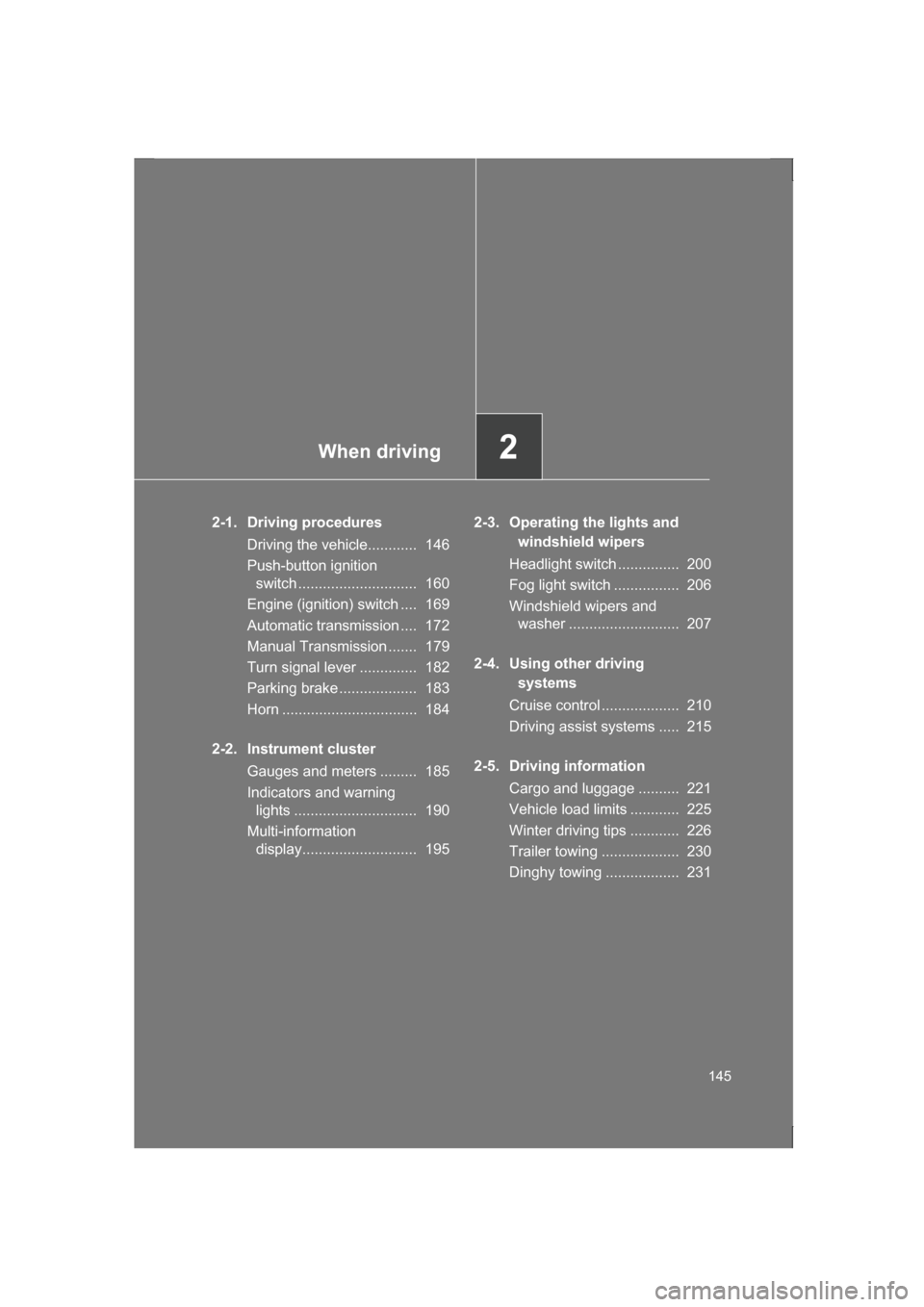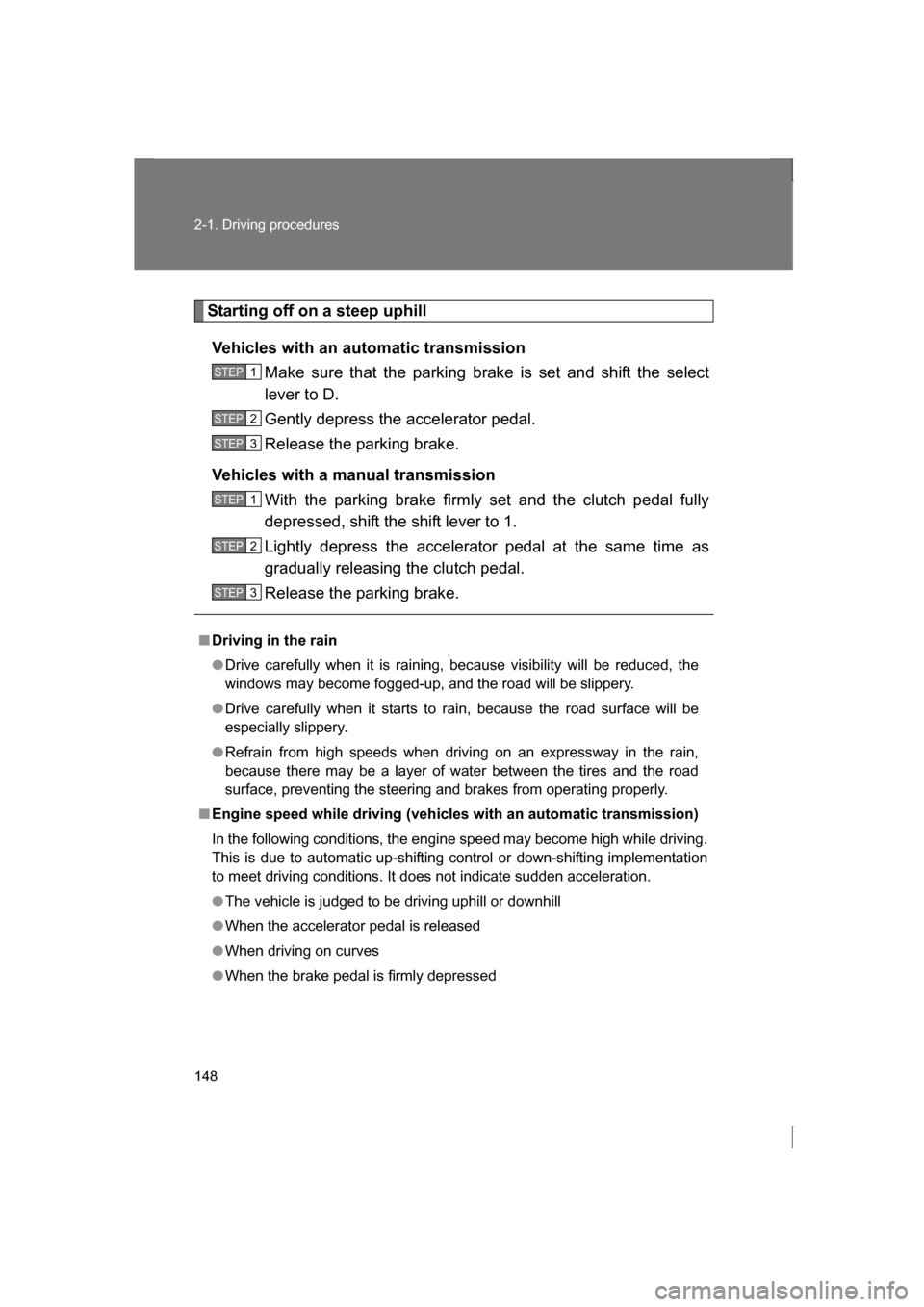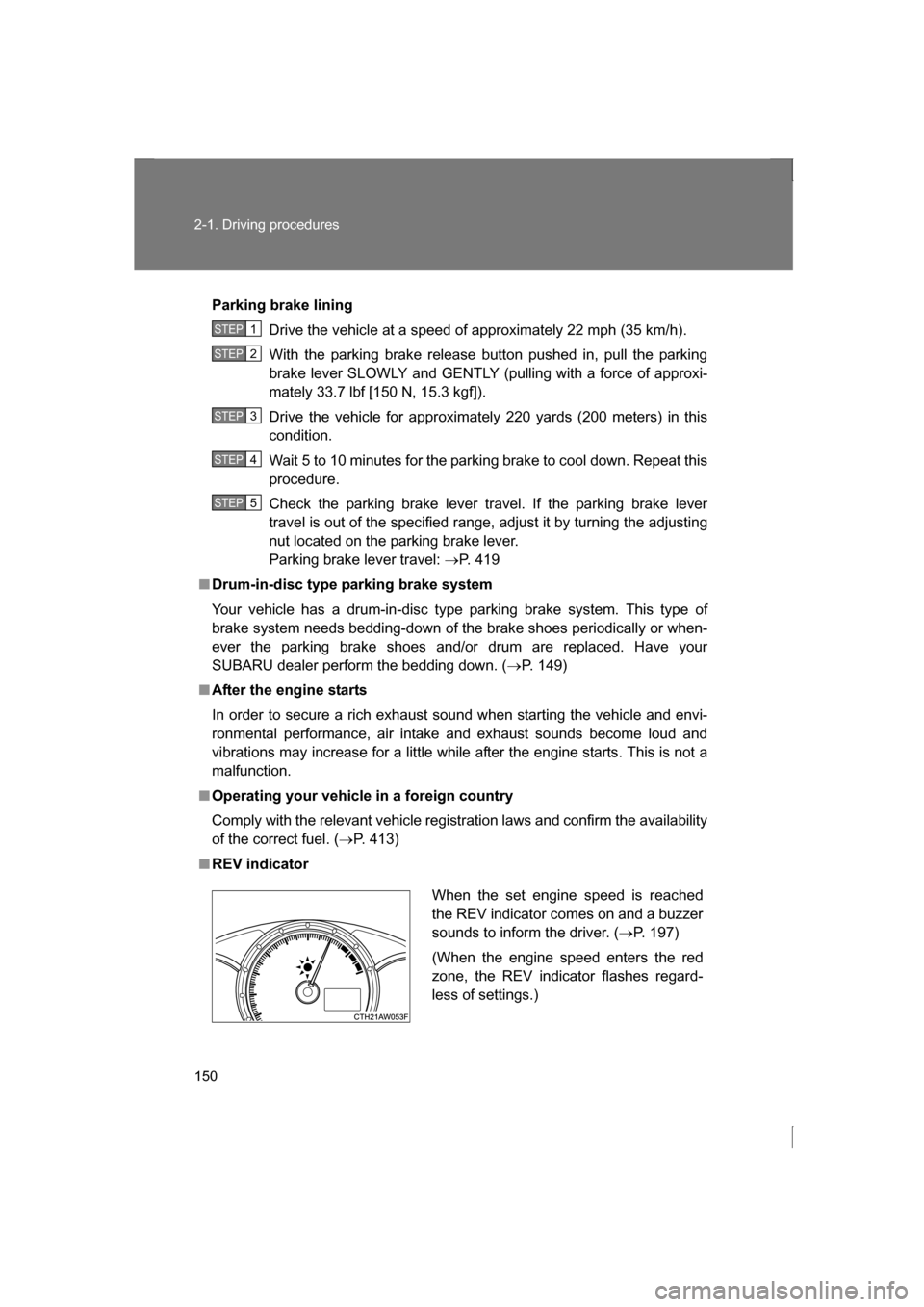Page 128 of 484

128
1-7. Safety information
Turn the engine switch to the “ON” position (vehicles without a
keyless access with push button start system), or the push-
button ignition switch to “ON” mode (vehicles with a keyless
access with push button start system). The ON and OFF indi-
cators illuminate for 6 seconds during the system check and
after the system check is performed, the ON and OFF indica-
tors turn off for 2 seconds. Then, the OFF indicator remains
off while the ON indicator is illuminated. If the ON indicator
remains off and the OFF indicator is illuminated, move the
occupant to the rear seat backwards and immediately contact
your SUBARU dealer and have the vehicle inspected.
If the front passenger’s frontal airbag ON indicator illuminates and the OFF indicator turns off
even when an infant or a small child is in a child restraint system (including booster seat)
This can be caused by the child restraint system being installed incor-
rectly. Perform the following.
Vehicles without a keyless access with push button start sys-
tem:
The engine switch is turned to the “LOCK” position.
Vehicles with a keyless access with push button start system:
Turn the push-button ignition switch off.
Remove the child restraint system from the seat. By referring
to the child restraint manufacturer’s recommendations as well
as the child restraint system installation procedure in “child
restraint system”, correctly reinstall the child restraint system.
STEP 5
STEP 1
STEP 2
Page 129 of 484
129
1-7. Safety information
1
Before driving
Vehicles without a keyless access with push button start sys-
tem:
The engine switch is turned to the “ON” position and make
sure that the front passenger’s frontal airbag ON indicator
turns off and the OFF indicator illuminates.
Vehicles with a keyless access with push button start system:
The push-button ignition switch is turned to “ON” mode and
make sure that the front passenger’s frontal airbag ON indica-
tor turns off and the OFF indicator illuminates.
If the ON indicator still remains illuminated while the OFF indi-
cator turns off, perform the following.
Page 145 of 484

When driving2
145
2-1. Driving proceduresDriving the vehicle............ 146
Push-button ignition switch ............................. 160
Engine (ignition) switch .... 169
Automatic transmission .... 172
Manual Transmission ....... 179
Turn signal lever .............. 182
Parking brake ................... 183
Horn ................................. 184
2-2. Instrument cluster Gauges and meters ......... 185
Indicators and warning lights .............................. 190
Multi-information display............................ 195 2-3. Operating the lights and
windshield wipers
Headlight switch ............... 200
Fog light switch ................ 206
Windshield wipers and washer ........................... 207
2-4. Using other driving systems
Cruise control ................... 210
Driving assist systems ..... 215
2-5. Driving information Cargo and luggage .......... 221
Vehicle load limits ............ 225
Winter driving tips ............ 226
Trailer towing ................... 230
Dinghy towing .................. 231
Page 146 of 484

146
2-1. Driving procedures
Driving the vehicle
The following procedures should be observed to ensure safe driv-
ing:
■Starting the engine
→P. 160, 169
■Driving
Vehicles with an automatic transmission With the brake pedal depressed, shift the select lever to D. (→ P. 172)
Release the parking brake. ( →P. 183)
Gradually release the brake pedal and gently depress the
accelerator pedal to accelerate the vehicle.
Vehicles with a manual transmission While depressing the clutch pedal, shift the shift lever to 1. (→ P. 179)
Release the parking brake. ( →P. 183)
Gradually release the clutch pedal. At the same time, gently
depress the accelerator pedal to accelerate the vehicle.
■Stopping
Vehicles with an automatic transmission With the select lever in D, depress the brake pedal.
If necessary, set the parking brake.
If the vehicle is to be stopped for an extended period of time, shift
the select lever to P or N. ( →P. 172)
Vehicles with a manual transmission While depressing the clutch pedal, depress the brake
pedal.
If necessary, set the parking brake.
If the vehicle is to be stopped for an extended period of time, shift
the shift lever to neutral. ( →P. 179)
STEP 1
STEP 2
STEP 3
STEP 1
STEP 2
STEP 3
STEP 1
STEP 2
STEP 1
STEP 2
Page 147 of 484

147
2-1. Driving procedures
2
When driving
■Parking the vehicle
Vehicles with an automatic transmission With the select lever in D, depress the brake pedal.
Shift the select lever to P. ( →P. 172)
Set the parking brake. ( →P. 183)
Vehicles without a keyless access with push button start
system:
Turn the engine switch to the “LOCK” position to stop the
engine.
Vehicles with a keyless access with push button start sys-
tem:
Press the push-button ignition switch to stop the engine.
Lock the door, making sure that you have the key on your
person.
If parking on a hill, block the wheels as needed.
Vehicles with a manual transmission While depressing the clutch pedal, depress the brake
pedal.
Shift the shift lever to neutral. ( →P. 179)
Set the parking brake. ( →P. 183)
Vehicles without a keyless access with push button start
system:
Turn the engine switch to the “LOCK” position to stop the
engine.
Vehicles with a keyless access with push button start sys-
tem:
Press the push-button ignition switch to stop the engine.
Lock the door, making sure that you have the key on your
person.
If parking on a hill, shift the shift lever to 1 or R and block the
wheels as needed.
STEP 1
STEP 2
STEP 3
STEP 4
STEP 5
STEP 1
STEP 2
STEP 3
STEP 4
STEP 5
Page 148 of 484

148
2-1. Driving procedures
Starting off on a steep uphillVehicles with an automatic transmission Make sure that the parking brake is set and shift the select
lever to D.
Gently depress the accelerator pedal.
Release the parking brake.
Vehicles with a manual transmission With the parking brake firmly set and the clutch pedal fully
depressed, shift the shift lever to 1.
Lightly depress the accelerator pedal at the same time as
gradually releasing the clutch pedal.
Release the parking brake.
■Driving in the rain
●Drive carefully when it is raining, because visibility will be reduced, the
windows may become fogged-up, and the road will be slippery.
●Drive carefully when it starts to rain, because the road surface will be
especially slippery.
●Refrain from high speeds when driving on an expressway in the rain,
because there may be a layer of water between the tires and the road
surface, preventing the steering and brakes from operating properly.
■Engine speed while driving (vehicl es with an automatic transmission)
In the following conditions, the engine speed may become high while driving.
This is due to automatic up-shifting c ontrol or down-shifting implementation
to meet driving conditions. It does not indicate sudden acceleration.
●The vehicle is judged to be driving uphill or downhill
●When the accelerator pedal is released
●When driving on curves
●When the brake pedal is firmly depressed
STEP 1
STEP 2
STEP 3
STEP 1
STEP 2
STEP 3
Page 149 of 484
![SUBARU BRZ 2013 1.G Owners Manual 149
2-1. Driving procedures
2
When driving
■New vehicle break-in driving (the first 1000 miles [1600 km])
The performance and long life of your vehicle are dependent on how you
handle and care for SUBARU BRZ 2013 1.G Owners Manual 149
2-1. Driving procedures
2
When driving
■New vehicle break-in driving (the first 1000 miles [1600 km])
The performance and long life of your vehicle are dependent on how you
handle and care for](/manual-img/17/7178/w960_7178-148.png)
149
2-1. Driving procedures
2
When driving
■New vehicle break-in driving (the first 1000 miles [1600 km])
The performance and long life of your vehicle are dependent on how you
handle and care for your vehicle while it is new. Follow these instructions
during the first 1000 miles (1600 km):
●Do not allow the engine speed to exceed 4000 rpm except in an emer-
gency.
●Do not drive at one constant engine or vehicle speed for a long time,
either fast or slow.
●Avoid starting suddenly and rapid acceleration, except in an emergency.
●Avoid hard braking, except in an emergency.
The same break-in procedures should be applied to an overhauled engine,
newly mounted engine or when brake pads or brake linings are replaced
with new ones.
■Replacement of brake pad and lining
The front disc brake and the rear disc brake have audible wear indicators on
the brake pads. If the brake pads wear close to their service limit, the wear
indicator makes a very audible scraping noise when the brake pedal is
applied.
■Breaking-in of new brake pads and linings
When replacing the brake pad or li ning, use only genuine SUBARU parts.
After replacement, the new parts must be broken in as follows.
Brake pad and lining
While maintaining a speed of 30 to 40 mph (50 to 65 km/h), step on the
brake pedal lightly. Repeat this five or more times. If you hear this scraping noise each time
you apply the brake pedal, have the
brake pads serviced by your SUBARU
dealer as soon as possible.
Page 150 of 484

150
2-1. Driving procedures
Parking brake liningDrive the vehicle at a speed of approximately 22 mph (35 km/h).
With the parking brake release button pushed in, pull the parking
brake lever SLOWLY and GENTLY (pulling with a force of approxi-
mately 33.7 lbf [150 N, 15.3 kgf]).
Drive the vehicle for approximately 220 yards (200 meters) in this
condition.
Wait 5 to 10 minutes for the parking brake to cool down. Repeat this
procedure.
Check the parking brake lever travel. If the parking brake lever
travel is out of the specified range, adjust it by turning the adjusting
nut located on the parking brake lever.
Parking brake lever travel: →P. 419
■Drum-in-disc type parking brake system
Your vehicle has a drum-in-disc type parking brake system. This type of
brake system needs bedding-down of t he brake shoes periodically or when-
ever the parking brake shoes and/or drum are replaced. Have your
SUBARU dealer perform the bedding down. ( →P. 149)
■After the engine starts
In order to secure a rich exhaust sound when starting the vehicle and envi-
ronmental performance, air intake and exhaust sounds become loud and
vibrations may increase for a little while after the engine starts. This is not a
malfunction.
■Operating your vehicle in a foreign country
Comply with the relevant vehicle registration laws and confirm the availability
of the correct fuel. ( →P. 413)
■REV indicator
STEP 1
STEP 2
STEP 3
STEP 4
STEP 5
When the set engine speed is reached
the REV indicator comes on and a buzzer
sounds to inform the driver. ( →P. 197)
(When the engine speed enters the red
zone, the REV indicator flashes regard-
less of settings.)